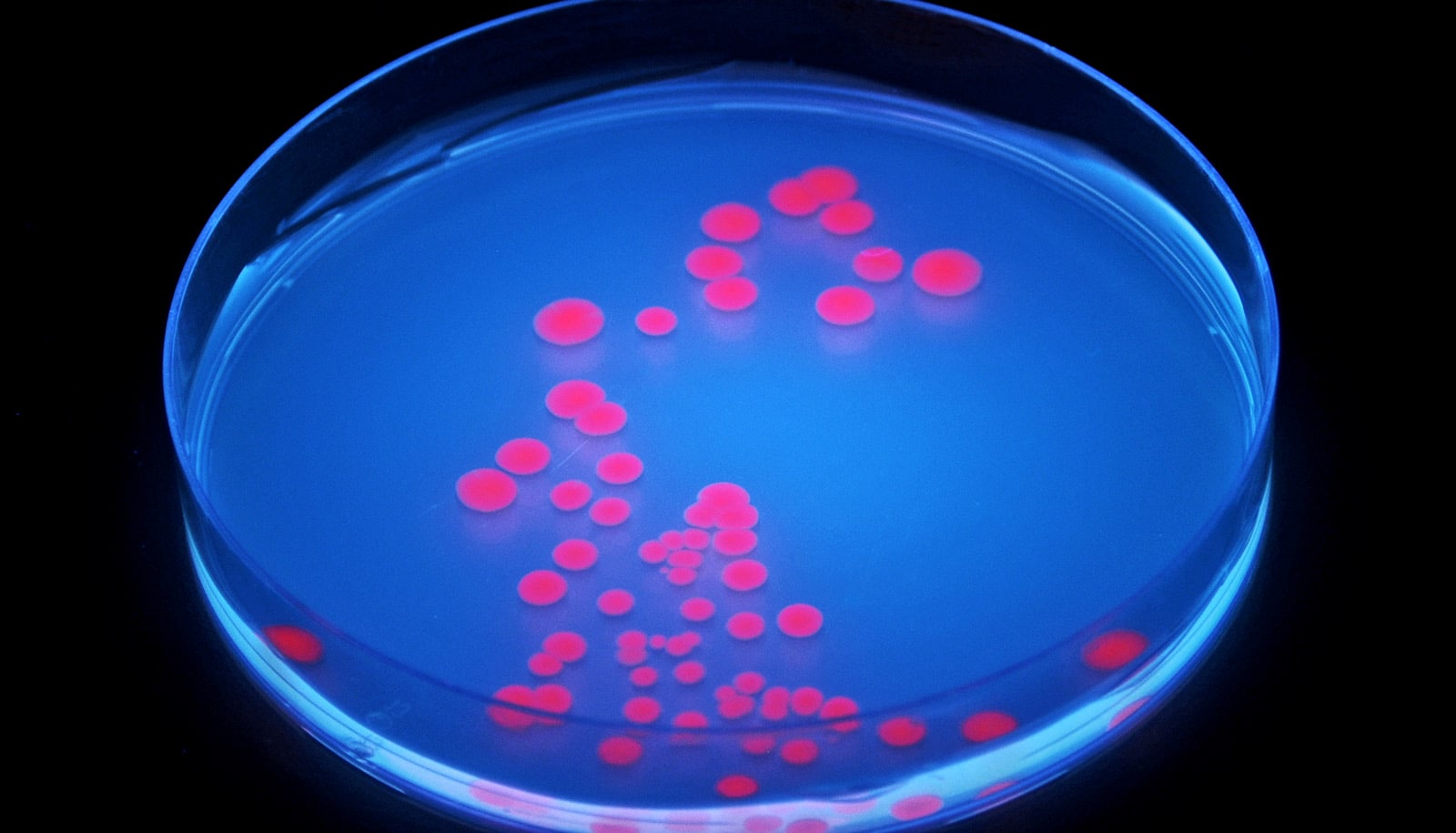Related individuals of the soil bacterium Myxococcus xanthus live in cooperative groups and exhibit astonishing genetic and behavioral diversity, research finds.
The cells of this predatory bacterium form cooperative groups that swarm together and hunt other microorganisms within the soil. In order to move as a group, they secrete lubricating substances and cast out appendages that attach to the surrounding surface and other cells, moving them forward as they retract these appendages.
When food becomes scarce, thousands of these bacteria aggregate into a fruiting body and form resting spores, allowing them to withstand hunger and drought.
Researchers previously had theoretical reasons to expect that cooperative groups of microbes in nature might generally be socially homogeneous, as this would prevent conflict between cells from undermining cooperation. Genetically distinct individuals from different groups have been shown to often avoid, obstruct, and even combat each other.
“Our knowledge about the genetic composition within cooperative groups of these social bacteria in nature used to be very limited,” says Sébastien Wielgoss, a lecturer in the research group of professor Gregory Velicer at the ETH Zurich Institute for Integrative Biology.
Surprising variety
With their colleagues, Wielgoss and Velicer have more closely examined the genetic relationships among members of the same M. xanthus fruiting body group in the soil. They used one of the largest collections of M. xanthus strains worldwide, which Velicer keeps in his laboratory freezers.
As reported in Science, the researchers used genetic analyses to show that while cooperative groups of the soil bacterium M. xanthus do consist of closely related cells, the number of genetic types and varieties of social behavior found within individual fruiting-body groups are unexpectedly high. The researchers inferred that these collections of diversified cell lines can remain intact for hundreds of generations.
For their study, the researchers investigated groups of cells that descended recently from a common ancestor. Mutation formed various socially different, but closely related, cell lines within these groups, with lines differing in how fast they swarm or how many spores they produce within a fruiting body.
Some forms of diversity pose a threat to group productivity. For example, individual bacteria can exhibit “cheating” behavior: they contribute little to the group while exploiting its other members and lowering group function. “However, behavioral studies with these same groups have not found such socially disruptive cheating,” Wielgoss says.
In contrast, while the majority of groups are highly genetically and socially diverse, the observed diversity does not appear to undermine cooperative functions at the group level.
‘Social’ genes
The researchers attribute this high diversity of behavioral patterns to evolutionary selection that focuses on a small number of “social” genes that control the social habits of the bacteria. Mutations in these “selection hotspots” favored by natural selection cause a variety of behavioral changes, yielding a diverse society of cells with varying levels of spore production and swarming speed. The researchers speculate that distinct lines in the same group likely also differ in their cooperative hunting abilities, although the study did not test this.
Wielgoss explains that natural selection may favor some combinations of diversified cell lines over other combinations or even over homogeneous groups: “Cell groups with a large behavioral repertoire may respond to environmental changes more effectively. They may often be more evolutionarily successful than homogeneous groups of cells that all behave in the same way. ‘Cultural diversity’ appears to be rather frequent among bacterial social groups.”
The researchers believe that these new insights into the genetic and behavioral properties of cooperative soil bacteria may help us to understand cooperation within other types of bacteria as well, including the pathogen Pseudomonas aeruginosa, which infects immuno-compromised patients and causes serious long-term infections.
Source: Michael Keller for ETH Zurich



